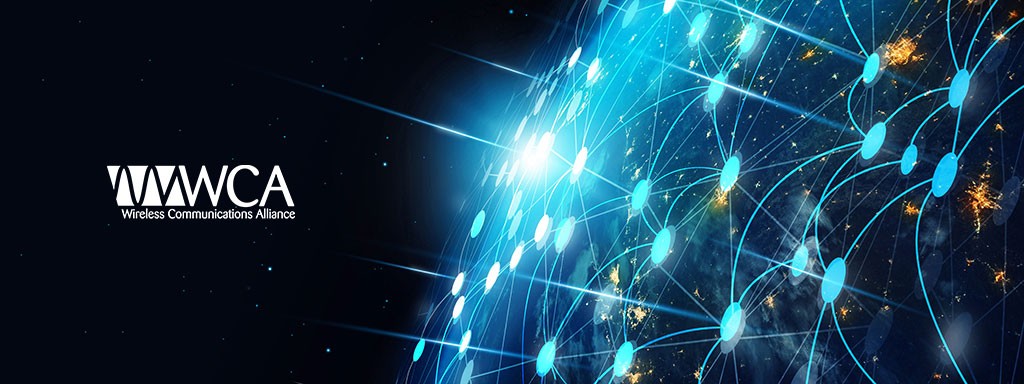
Wireless and Connected Technology Explained. We explore the evolving world of connected technology with depth and clarity. Our analyses uncover emerging trends, assess current advancements, and forecast future innovations. Whether you are an industry professional or simply curious, our exploration of 5G, 6G, IoT, and edge computing offers valuable insight. From industrial IoT and connected AI to mmWave and adaptive network architectures, we examine how these technologies are shaping the next era of digital connectivity.
Organizations (5)
The European Telecommunications Standards Institute (ETSI) is an independent, non-profit standardization organization for the telecommunications industry in Europe, with a worldwide influence. ETSI plays a significant role in developing global standards for Information and Communication Technologies (ICT), including fixed, mobile, radio, converged, broadcast, and internet technologies. Key aspects of ETSI include:
- Standard Development: ETSI is responsible for creating internationally-applicable standards across a wide range of telecommunications and ICT services and technologies.
- Global Influence: While ETSI is focused on Europe, its standards are often adopted worldwide. The GSM standard developed by ETSI is a prime example of its global impact.
- Membership: ETSI’s members include manufacturers, network operators, service providers, research bodies, and national administrations from across the globe.
- Collaboration with Other Bodies: ETSI collaborates with other standardization organizations like ITU (International Telecommunication Union) and 3GPP (3rd Generation Partnership Project) to ensure global alignment and interoperability of standards.
- Innovation and Technology Development: ETSI is involved in emerging and future-oriented technologies, playing a key role in areas like 5G, IoT (Internet of Things), and cybersecurity.
- Standards for New Technologies: ETSI has been instrumental in developing standards for various new technologies, including those related to network functions virtualization (NFV), software-defined networking (SDN), and more.
ETSI’s work ensures compatibility and interoperability of systems, which is vital for the global telecommunications industry, fostering innovation and facilitating seamless communication and connectivity.
The GSMA (Global System for Mobile Communications Association) is an industry organization that represents the interests of mobile network operators worldwide. Established in 1987, it plays a central role in shaping the future of mobile communications and the wider mobile ecosystem. Here are some key aspects of the GSMA:
- Membership and Representation: The GSMA has a large and diverse membership that includes nearly 800 mobile operators and more than 300 companies in the broader mobile ecosystem, including handset manufacturers, software companies, equipment providers, and internet companies.
- Standards and Policies: One of its main roles is to develop and promote mobile industry standards and policies. The GSMA works closely with standardization bodies, governments, and other organizations to foster a collaborative environment for standard development.
- Mobile World Congress: The GSMA is perhaps best known for organizing the Mobile World Congress (MWC) events, which are among the largest annual exhibitions and conferences in the mobile industry, held in different locations around the world.
- Advocacy and Research: The organization advocates on behalf of its members on a range of issues, from regulatory and public policy to technology and health matters. It also conducts research and publishes reports on various aspects of the mobile industry.
- Sustainability and Social Impact: The GSMA is involved in initiatives that use mobile technology for positive social and economic impact. This includes efforts in areas such as environmental sustainability, digital inclusion, and emergency response.
- 5G Development: The GSMA plays a significant role in the development and adoption of 5G technology, collaborating with industry stakeholders to establish standards and ensure a smooth rollout of 5G networks.
In summary, the GSMA is a key global organization in the mobile communications industry, facilitating collaboration, innovation, and strategic development to benefit mobile operators and the wider mobile ecosystem.
The Federal Communications Commission (FCC) is an independent agency of the United States government created by statute (47 U.S.C. § 151 and 47 U.S.C. § 154) to regulate interstate communications by radio, television, wire, satellite, and cable. It plays a key role in managing communication technologies and services in the U.S. Key aspects of the FCC include:
- Regulation and Oversight: The FCC regulates all non-federal government use of the radio spectrum (including radio and television broadcasting), all interstate telecommunications (wire, satellite, and cable), and international communications that originate or terminate in the United States.
- Licensing: It is responsible for licensing radio and television stations, and ensuring compliance with the relevant regulations.
- Promoting Competition: The FCC works to promote competition, innovation, and investment in broadband services and facilities.
- Spectrum Management: One of its crucial roles is managing the nation’s airwaves, including spectrum allocation and assignment for various uses.
- Consumer Protection: The agency also enforces laws to protect consumers against fraud, unfair practices, and monopolistic behavior in the communications realm.
- Policy Making: The FCC develops policy concerning issues such as media ownership, net neutrality, privacy, and others that impact the nation’s communications.
- Emergency Communications: It plays a significant role in ensuring the reliability and security of critical communications infrastructure, particularly during emergencies.
- Digital Transition: The FCC has been instrumental in overseeing the transition from analog to digital broadcasting and the development and deployment of new communication technologies like 5G.
The FCC’s actions are watched closely by various stakeholders due to their far-reaching impact on how Americans communicate and access information.
The International Telecommunication Union (ITU) is a specialized agency of the United Nations responsible for issues that concern information and communication technologies. Established in 1865, originally as the International Telegraph Union, the ITU is one of the oldest international organizations. It plays a pivotal role in facilitating global communications and technology standards. Key aspects of the ITU include:
- Standardization: The ITU is responsible for developing international standards (ITU-T Recommendations) that facilitate seamless global telecommunications and ensure interoperable and efficient communication systems.
- Radio Spectrum Allocation: The ITU coordinates the global use of the radio spectrum (ITU-R Recommendations) and satellite orbits, ensuring non-interference and efficient use of these resources.
- Improving Access to ICTs: The organization works to improve access to information and communication technologies (ICTs) in underserved communities worldwide, promoting sustainable development.
- Regulatory Framework and Policies: ITU assists in developing regulatory frameworks and offers policy advice to ensure fair and equitable access to ICT services.
- Telecommunication Development: The ITU-D sector focuses on fostering international cooperation and solidarity in the delivery of technical assistance and the implementation of telecommunication/ICT projects in developing countries.
- Global Conferences and Exhibitions: ITU organizes the World Radiocommunication Conference (WRC), World Telecommunication Standardization Assembly (WTSA), and other significant events that shape the future of ICTs.
- Membership: ITU’s membership includes 193 Member States as well as over 800 private-sector entities, academic institutions, and international and regional organizations.
The ITU plays a crucial role in shaping global telecommunications’s technological and regulatory landscape, making it a cornerstone entity in modern communication and information exchange.
Organizations (5)
The European Telecommunications Standards Institute (ETSI) is an independent, non-profit standardization organization for the telecommunications industry in Europe, with a worldwide influence. ETSI plays a significant role in developing global standards for Information and Communication Technologies (ICT), including fixed, mobile, radio, converged, broadcast, and internet technologies. Key aspects of ETSI include:
- Standard Development: ETSI is responsible for creating internationally-applicable standards across a wide range of telecommunications and ICT services and technologies.
- Global Influence: While ETSI is focused on Europe, its standards are often adopted worldwide. The GSM standard developed by ETSI is a prime example of its global impact.
- Membership: ETSI’s members include manufacturers, network operators, service providers, research bodies, and national administrations from across the globe.
- Collaboration with Other Bodies: ETSI collaborates with other standardization organizations like ITU (International Telecommunication Union) and 3GPP (3rd Generation Partnership Project) to ensure global alignment and interoperability of standards.
- Innovation and Technology Development: ETSI is involved in emerging and future-oriented technologies, playing a key role in areas like 5G, IoT (Internet of Things), and cybersecurity.
- Standards for New Technologies: ETSI has been instrumental in developing standards for various new technologies, including those related to network functions virtualization (NFV), software-defined networking (SDN), and more.
ETSI’s work ensures compatibility and interoperability of systems, which is vital for the global telecommunications industry, fostering innovation and facilitating seamless communication and connectivity.
The GSMA (Global System for Mobile Communications Association) is an industry organization that represents the interests of mobile network operators worldwide. Established in 1987, it plays a central role in shaping the future of mobile communications and the wider mobile ecosystem. Here are some key aspects of the GSMA:
- Membership and Representation: The GSMA has a large and diverse membership that includes nearly 800 mobile operators and more than 300 companies in the broader mobile ecosystem, including handset manufacturers, software companies, equipment providers, and internet companies.
- Standards and Policies: One of its main roles is to develop and promote mobile industry standards and policies. The GSMA works closely with standardization bodies, governments, and other organizations to foster a collaborative environment for standard development.
- Mobile World Congress: The GSMA is perhaps best known for organizing the Mobile World Congress (MWC) events, which are among the largest annual exhibitions and conferences in the mobile industry, held in different locations around the world.
- Advocacy and Research: The organization advocates on behalf of its members on a range of issues, from regulatory and public policy to technology and health matters. It also conducts research and publishes reports on various aspects of the mobile industry.
- Sustainability and Social Impact: The GSMA is involved in initiatives that use mobile technology for positive social and economic impact. This includes efforts in areas such as environmental sustainability, digital inclusion, and emergency response.
- 5G Development: The GSMA plays a significant role in the development and adoption of 5G technology, collaborating with industry stakeholders to establish standards and ensure a smooth rollout of 5G networks.
In summary, the GSMA is a key global organization in the mobile communications industry, facilitating collaboration, innovation, and strategic development to benefit mobile operators and the wider mobile ecosystem.
The Federal Communications Commission (FCC) is an independent agency of the United States government created by statute (47 U.S.C. § 151 and 47 U.S.C. § 154) to regulate interstate communications by radio, television, wire, satellite, and cable. It plays a key role in managing communication technologies and services in the U.S. Key aspects of the FCC include:
- Regulation and Oversight: The FCC regulates all non-federal government use of the radio spectrum (including radio and television broadcasting), all interstate telecommunications (wire, satellite, and cable), and international communications that originate or terminate in the United States.
- Licensing: It is responsible for licensing radio and television stations, and ensuring compliance with the relevant regulations.
- Promoting Competition: The FCC works to promote competition, innovation, and investment in broadband services and facilities.
- Spectrum Management: One of its crucial roles is managing the nation’s airwaves, including spectrum allocation and assignment for various uses.
- Consumer Protection: The agency also enforces laws to protect consumers against fraud, unfair practices, and monopolistic behavior in the communications realm.
- Policy Making: The FCC develops policy concerning issues such as media ownership, net neutrality, privacy, and others that impact the nation’s communications.
- Emergency Communications: It plays a significant role in ensuring the reliability and security of critical communications infrastructure, particularly during emergencies.
- Digital Transition: The FCC has been instrumental in overseeing the transition from analog to digital broadcasting and the development and deployment of new communication technologies like 5G.
The FCC’s actions are watched closely by various stakeholders due to their far-reaching impact on how Americans communicate and access information.
The International Telecommunication Union (ITU) is a specialized agency of the United Nations responsible for issues that concern information and communication technologies. Established in 1865, originally as the International Telegraph Union, the ITU is one of the oldest international organizations. It plays a pivotal role in facilitating global communications and technology standards. Key aspects of the ITU include:
- Standardization: The ITU is responsible for developing international standards (ITU-T Recommendations) that facilitate seamless global telecommunications and ensure interoperable and efficient communication systems.
- Radio Spectrum Allocation: The ITU coordinates the global use of the radio spectrum (ITU-R Recommendations) and satellite orbits, ensuring non-interference and efficient use of these resources.
- Improving Access to ICTs: The organization works to improve access to information and communication technologies (ICTs) in underserved communities worldwide, promoting sustainable development.
- Regulatory Framework and Policies: ITU assists in developing regulatory frameworks and offers policy advice to ensure fair and equitable access to ICT services.
- Telecommunication Development: The ITU-D sector focuses on fostering international cooperation and solidarity in the delivery of technical assistance and the implementation of telecommunication/ICT projects in developing countries.
- Global Conferences and Exhibitions: ITU organizes the World Radiocommunication Conference (WRC), World Telecommunication Standardization Assembly (WTSA), and other significant events that shape the future of ICTs.
- Membership: ITU’s membership includes 193 Member States as well as over 800 private-sector entities, academic institutions, and international and regional organizations.
The ITU plays a crucial role in shaping global telecommunications’s technological and regulatory landscape, making it a cornerstone entity in modern communication and information exchange.















































